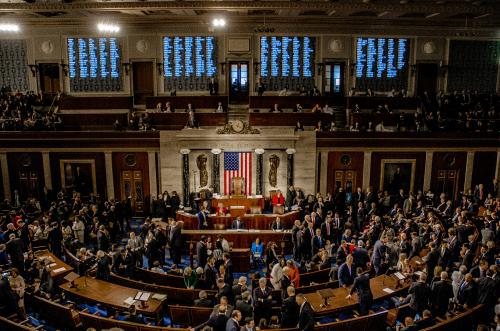Issue Overview
Generic sterile injectable or GSI drugs are the staple of hospital care, so shortages of these drugs can affect patients in emergency rooms, ICUs, cancer clinics, and outpatient elective surgery departments. Shortages of GSI drugs can have substantial adverse impacts through treatment delays, the use of inferior alternatives, and an increased risk of medication errors.
Market dynamics are at the heart of persistent GSI shortages. Hospitals primarily consider the price of competing GSI products because they can neither observe drug quality directly nor do they carry the full burden of patient harm resulting from shortages. Price pressures, coupled with FDA’s inability to enforce strictly manufacturing quality standards, reduce a manufacturer’s commitment to good manufacturing practices. When manufacturing quality problems are uncovered, often after FDA inspections, recalls and production stoppages can lead to shortages.
The Challenge
There is little room for error in the production of GSIs because the resulting product must be free of microorganisms and particulate matter. Establishing quality assurance requires a myriad of daily management decisions, including equipment selection, maintenance, quality of materials, staff qualifications, supervision, process control, and thorough investigations of any manufacturing problems that arise.
FDA regulates drug manufacturing, but it cannot ensure that all approved products are made to exact specifications. FDA is not able to continually monitor facilities and therefore it relies on manufacturers to report potential problems. FDA also faces a too-important-to-fail problem with some facilities if problems are found. To prevent disruptions in production of medically necessary drugs, FDA often allows continued product release from noncompliant facilities that make large share of such drugs, often GSIs. This sends the wrong signal to manufacturers.
Yet despite the challenges FDA faces, hospitals consider different manufacturers’ versions of a given GSI drug to be fully substitutable, weighing prices heavily when making purchasing decisions. To obtain low GSI drug prices, hospitals pool their bargaining power through group purchasing organizations (GPOs). Those contracts commit manufacturers to a price but rarely carry a minimum quantity agreement. Despite existence of GPO contracts, hospitals can and do buy off contract if faced with sufficiently attractive price.
Hospitals are concerned about drug shortages because shortages disrupt patient care and create costs for hospitals through increased staffing and more costly treatment alternatives. But costs to hospitals are low in comparison to the patient harm that results. The immense gap between the social and private benefits to having a reliable supply chain of drugs made to specification is a key reason why hospitals are not fully embracing many of the new resilience efforts in the market.
The resulting price pressures, coupled with incomplete FDA oversight, create a dynamic for manufacturers where there is little economic incentive to upgrade facilities, but strong incentive to overuse existing equipment and to skimp on proper staffing and oversight. If problems with systems or product batches are uncovered, often after FDA inspections, companies may need to discard or recall large batches of compromised product, and temporarily or permanently shut down lines or entire facilities. Any of these scenarios can result in shortages.
The Proposal
To reduce the incidence of GSI drug shortages, Wosińska and Frank propose policies that foster greater manufacturing reliability in GSI drug production. Their proposal combines push incentives to improve manufacturing infrastructure with the implementation of pull incentives through a pay-for-performance program that rewards hospitals for taking steps to prevent shortages before they occur. In addition, Wosińska and Frank propose a targeted government-funded buffer inventory to insure against supply chain shocks for drugs of particular public health import.
Component 1. Supporting Manufacturing Infrastructure Upgrades.
To address the deterioration of the domestic GSI infrastructure, Wosińska and Frank propose partially forgivable loans and enhanced regulatory support for technology transfer.
Wosińska and Frank propose that HHS offer $2 billion in targeted low-interest loans for facility upgrades or expansions. This aims to address the existing financing barriers related to the low profitability of such GSI facilities. The proposal does not direct manufacturers to specific technologies, instead focusing on establishing a path to quality operations. To reinforce quality outcome goals, Wosińska and Frank propose that part of the loan be forgivable if a company achieves agreed-on milestones that reflect manufacturing quality principles of proper employee processes and controls. Loan forgiveness could also include commitments to manufacture older GSI drugs that are more vulnerable to shortage.
The second element is enhanced FDA regulatory support for technology transfer. FDA already provides such support for drugs in shortage, lowering not only the time but regulatory barriers related to approving manufacturing supplements. Enhanced support for GSI drugs at high risk of shortage will lower technology transfer costs and with that lower the risk that older GSI drugs are dropped from manufacturer portfolios during changes in manufacturing infrastructure.
Component 2. Providing Incentives to Realign Hospital Purchasing.
The core of the Wosińska and Frank proposal is a pay-for-performance mechanism that rewards hospitals for taking steps to prevent future shortages during non-shortage periods, including building a buffer inventory and selecting vendors that are less likely to experience production disruptions. The proposed program would be established by the Centers for Medicare & Medicaid (CMS) and build on CMS’s longstanding experience with pay-for-performance programs. But unlike many of the existing programs, the program Wosińska and Frank propose would not be budget neutral because it is imperative to pay more for quality and reliability.
To support hospital decision-making, Wosińska and Frank also propose ways for FDA and other parties to provide information about manufacturer quality and reliability. FDA should enhance the information it makes public on lagging indicators of manufacturer quality, which reflect compliance with good manufacturing practices. To create leading indicators of quality, Wosińska and Frank recommend that FDA focus the development of its Quality Management Maturity (QMM) program on GSI facilities. QMM metrics, in particular, play an important role in the proposed pay-for-performance program.
Component 3. Buffering through a Targeted Government-Funded Inventory.
Finally, the proposal would also direct the US Department of Health and Human Services (HHS) to develop a targeted buffer inventory at the national level to protect the public against shortages in life saving drugs and other drugs of special public health significance. Unlike a stockpile that is set aside and not used until an emergency, this would be a first-in, first-out buffer inventory, likely held by wholesalers. Higher inventory levels would provide a buffer should production be disrupted or if there is a demand spike.
This inventory could be used as form of insurance against supply chain shock for drugs the short supply of which would lead to dire health consequences. Good candidates for the buffer inventory include drugs that have no substitutes, those whose unavailability leads to immediate and significant adverse health outcomes, and those for which supply chains are vulnerable. Crash cart drugs appear to fit all three criteria, as do many of the older GSIs used for treating cancer.
To promote manufacturing reliability in the market, HHS should purchase GSI products for the buffer inventory from manufacturers that have good manufacturing quality and reliability records. HHS would also need to have participating wholesalers or manufacturers build inventories slowly enough so that such buildup does not cause shortages. Wosińska and Frank also recommend that HHS develop allocation plans for when inventoried drugs are in shortage, enabling allocation to diverge from historical usage to where the shorted drug may be needed most.
Conclusion
The social benefits from GSI supply-chain resilience greatly exceed the private benefits of reliability to manufacturers and hospitals. One should not expect private parties to internalize the social value without additional incentives.
Realigning hospital and manufacturer incentives requires involvement of multiple government agencies, supported with new funding, and, in some cases, with new authorities. But without a serious, coordinated effort on multiple fronts, policymakers will fail to change the dynamics and the unacceptably high number of costly shortages will persist.
The Brookings Institution is financed through the support of a diverse array of foundations, corporations, governments, individuals, as well as an endowment. A list of donors can be found in our annual reports published online here. The findings, interpretations, and conclusions in this report are solely those of its author(s) and are not influenced by any donation.
The Brookings Institution is committed to quality, independence, and impact.
We are supported by a diverse array of funders. In line with our values and policies, each Brookings publication represents the sole views of its author(s).








Commentary
Federal policies to address persistent generic drug shortages
June 21, 2023
Key takeaways